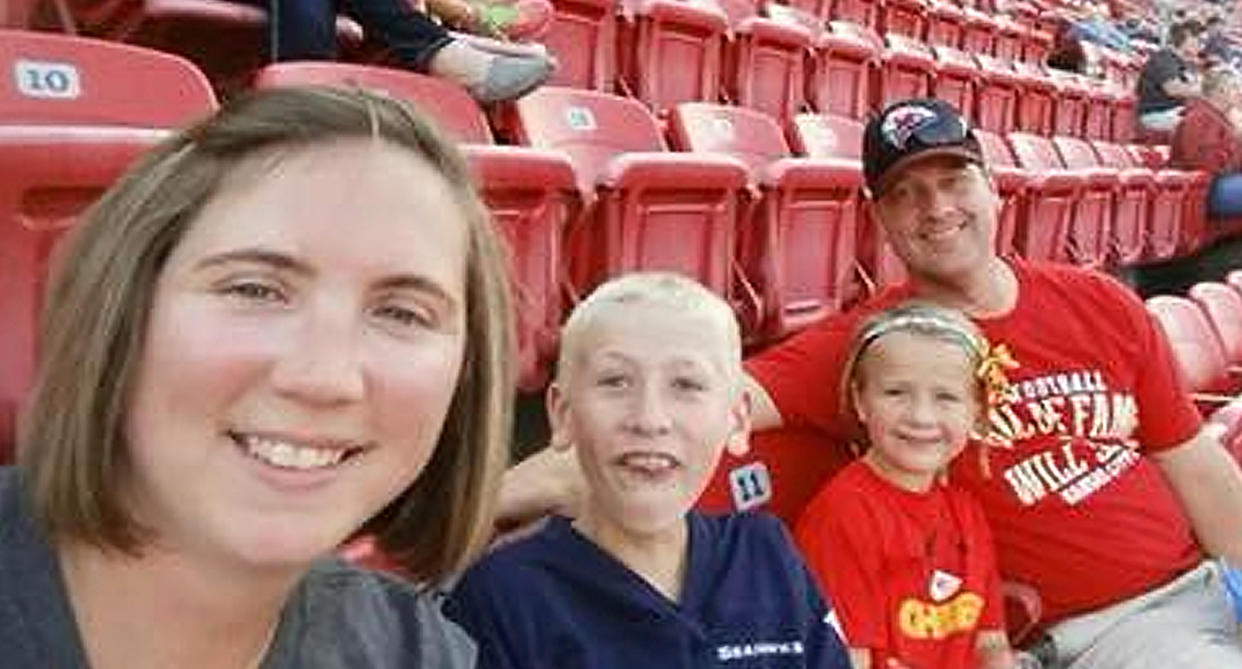A family of four died in their sleep from toxic gas. How common is this?

The story of an Iowa family of four who was found dead in Tulum, Mexico is a tragic one. Kevin and Amy Sharp had spent the week of spring break in the beach town off the eastern coast of the Yucatan peninsula with their two kids, and were due to fly out to St. Louis, Missouri on Wednesday. Instead, their bodies were discovered in the condo where they were staying, dead from apparent “gas asphyxiation.”
As authorities work to find out what happened, here’s what you need to know about the Sharps — and the way that they lost their lives.
Who were the Sharps?
The Sharp family lived in Creston, Iowa, a southwestern Iowa town, where Kevin, 41, worked as a salesman at a local beer distribution company and Amy, 38, as a dental-claims specialist, according to the Des Moines Register. Their seven-year-old daughter Adriana was described as a mini “fashion stylist” and their son Sterling, 12, a lover of sports. Recreationally, Kevin was a race car driver, an activity that earned him the nickname “Sharpshooter.” The two had been married for 16 years.
Where was the family vacationing?
Kevin and Amy decided to spend their spring break in Mexico, arriving to the beach town of Tulum on March 14. The next day, Amy sent a text to her mom confirming they’d arrived. The couple rented a condo that they found through a website (either VRBO or Homeaway). The last day that anyone heard from them was on March 15, when their son apparently sent a Snapchat of his feet by a pool.
How did family members realize something was wrong?
On Wednesday, the Sharps were due to fly out of Cancun (a 45-minute drive from Tulum) and head to St. Louis, Missouri, where they planned to drive a few hours to watch a basketball game in Illinois. When Kevin failed to touch base with his employees on Wednesday as planned, they considered it strange, but it wasn’t until Thursday that family members began to panic about the Sharps’ disappearance and called the police.
What did authorities find when they arrived at the condo?
A missing persons report was filed by the U.S. State Department, after which Mexican officials were dispatched to the Sharp’s condo in Tulum. Inside, they found all four family members deceased. Foul play of any kind was immediately ruled out as officials theorized that the family died of gas asphyxiation. Autopsies on the family confirmed this theory, ruling that they died of “toxic gas inhalation.”
How could this have happened?
Although the exact type of gas that caused the deaths has yet to be revealed, the U.S. Consulate in Mexico has informed the Sharps’ surviving family members that an appliance in the apartment was the source of the gas leak. Pictures from the scene show experts surveying the kitchen appliances with protective gear. The family could have died from exposure to carbon monoxide, a colorless, odorless, tasteless gas that can prove toxic within hours when inhaled at too high of levels. Due to its invisible nature, it’s been deemed the “silent killer.”
PHOTOS: Inspection of gas installation of hotel room where Iowa family of 4 was found dead in Mexico, after autopsy finds they died of asphyxiation by inhaling toxic fumes. Pics via Quintana Roo State AG. #abc7ny pic.twitter.com/LiV6HXVWOp
— Darla Miles (@DarlaMiles7) March 24, 2018
Is carbon monoxide poisoning common?
According to the Centers for Disease Control and Prevention, there are roughly 430 deaths per year from carbon monoxide poisoning (the flu, by comparison, kills an estimated 36,000 people per year). But while fatalities may be rare, exposure to too much carbon monoxide—which can be produced by cars, trucks, grills, fireplaces, and ovens—is common. An estimated 15,000 people end up in emergency rooms each year due to overexposure.
What are the symptoms—and how can it be prevented?
Too much carbon monoxide can make you feel a sudden onset of flu-like symptoms, according to the Centers for Disease Control and Prevention. Among the most common symptoms are: headache, dizziness, weakness, upset stomach, vomiting, chest pain, and confusion. On top of making sure all of your appliances are running safely, the best way to prevent carbon monoxide poisoning is to install a detector, which can alert you to dangerously high levels.
Could the Sharps have died from something other than carbon monoxide?
Yes. There are other household gases that can potentially kill you including hydrogen sulfide (which produces a rotten egg smell), ammonia, and bleach. The CDC offers tips for how to stay safe from harmful household chemicals here.
Authorities reportedly plan to release a full report on the exact nature of the chemical that killed the Sharps at a later date. Although the substance that caused their demise remains unclear, what is certain is that their deaths have left a huge hole—not only among their own family members, but the approximately 8,000 people who live in their town of Creston, Iowa. “It’s a blow to the community,” a friend of Kevin Sharp’s told the Des Moines Register. “Everybody is trying to deal with it, grieve with it.”
In the wake of the deaths, some NASCAR drivers have tweeted out messages of love—including award-winning racer Brad Keselowski. “Very sad story,” Keselowski wrote. “My sincere condolences.”
.
So sorry to read about the Sharp family’s passing. They were proud supporters of the #2crew and will be missed dearly by friends, family and the community; Very sad story.
My sincere condolences.
— Brad Keselowski (@keselowski) March 24, 2018
Read more from Yahoo Lifestyle:
? How Parkland became the new face of gay activism
? Bathtub drownings are more common than you think
? Photos from the March for Our Lives protests around the world
Follow us on Instagram, Facebook, and Twitter for nonstop inspiration delivered fresh to your feed, every day.
